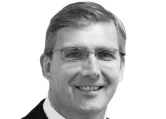
Japan : Solar, Nuclear, T&D and the summer 2012
By Frenk WithoosIn July the new Feed In Tariff (FIT) for renewable energy sources will come in effect. Under the new FIT, utilities are required to buy solar, wind, geothermal and hydro power at a fixed tariff and are allowed to pass on such cost to the consumers.
The FIT will have most immediate impact on the Solar Photovoltaic market. While the other renewable sources have also attractive rates, either lengthy environmental procedures or less favorable conditions play their part. Solar tariff is applicable for installation larger then 10kW and the utilities will pay 42 yen (around 52 US cents) per kWh for 20 years, which is almost twice the current rate in Germany. German tariffs are actually lowered every year (2004 = 54 euro cents / kWh ; 2012 = 21,99 euro cents/kWh for rooftop > 100kW) to encourage more efficient production of renewable energy.
The Solar market is forecasted to grow from around 5GW today to 28GW by 2020, majority of the growth will be related to the consumer rooftop applications, still a considerable amount of mega-solar projects (> 1MW) will come on the market.
Not only the new FIT tariffs got lot of attention recently, also the Oi Nuclear reactors 3&4 restart is capturing many headlines. The country is split over the recent approval given for the restart. Majority of the Japanese are of the opinion it is too early, while the related businesses and governmental agencies are very much in favor.
While the Oi units did meet the required new safety standards (by computer simulation) according to the Nuclear Safety commission, none of those measures, (such as a higher seawall, a seismically isolated emergency command center and filters to remove any radioactive substances in the case they are vented from the reactor core to the atmosphere during an emergency), have actually been implemented.
Kansai Electric Power Company (KEPCO) has committed to implement them over the next three years, but in the current climate not many people actually believe this will happen. The minister of economy, trade and industry (METI), Yukio Edano, was quoted saying “ we have not necessarily gained acceptance from every member of the public, but we think we have garnered a certain level of understanding”. Actually a recent poll published on 4th of June resulted in 71 percent of the Japanese public do not agree with the restart.
Unfortunately the long debate over the restart and the extensive lobbying effort by KEPCO, has prevented actions to further improve the power generation capacity, such as installing additional thermal generation sources and interconnections. Also the much discussed restructuring of the Utility market did not make much progress.
While a METI committee on industry reform is examining two proposals for splitting off power generation from transmission operations, the hurdles remain tremendous high with the utility industry putting up fierce resistance.
The expected boom in the renewable power generation can only be sustained if the Utility industry is soon being restructured. To integrate all those fluctuating and remote generation sources requires additional investments in the transmission and distribution grid. As currently the Utilities have no direct incentive to integrate those renewable, it is even more unlikely they will make additional investments in the grid. It is far more easier and commercial interesting to return to the nuclear power generation era simply by arguing that the power grid is not able to integrate so much renewable energy.
Further the current business model has created a relative expensive generation and transmission as well as an inflexible network. Since the FIT cost is being passed on to the consumers it is even more urgent to split the generation and transmission businesses to create more competition in the utility market, which in return will reduce the cost for the consumer.
Some are even drawing parallels between the KEPCO actions, in delaying any potential solutions to reduce any power shortfall in the summer, to the slow progress being made to reform the overall Utility industry.
It will be in nobody interest to support this “let’s keep talking and it will go away” scenario. The new FIT can be a serious game changer if the environment and stake holders can truly support it. Let’s hope common sense will prevail.
The views expressed are mine alone and do not necessarily reflect the views of my employer.














 Advertise
Advertise











